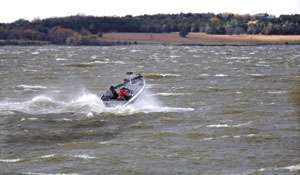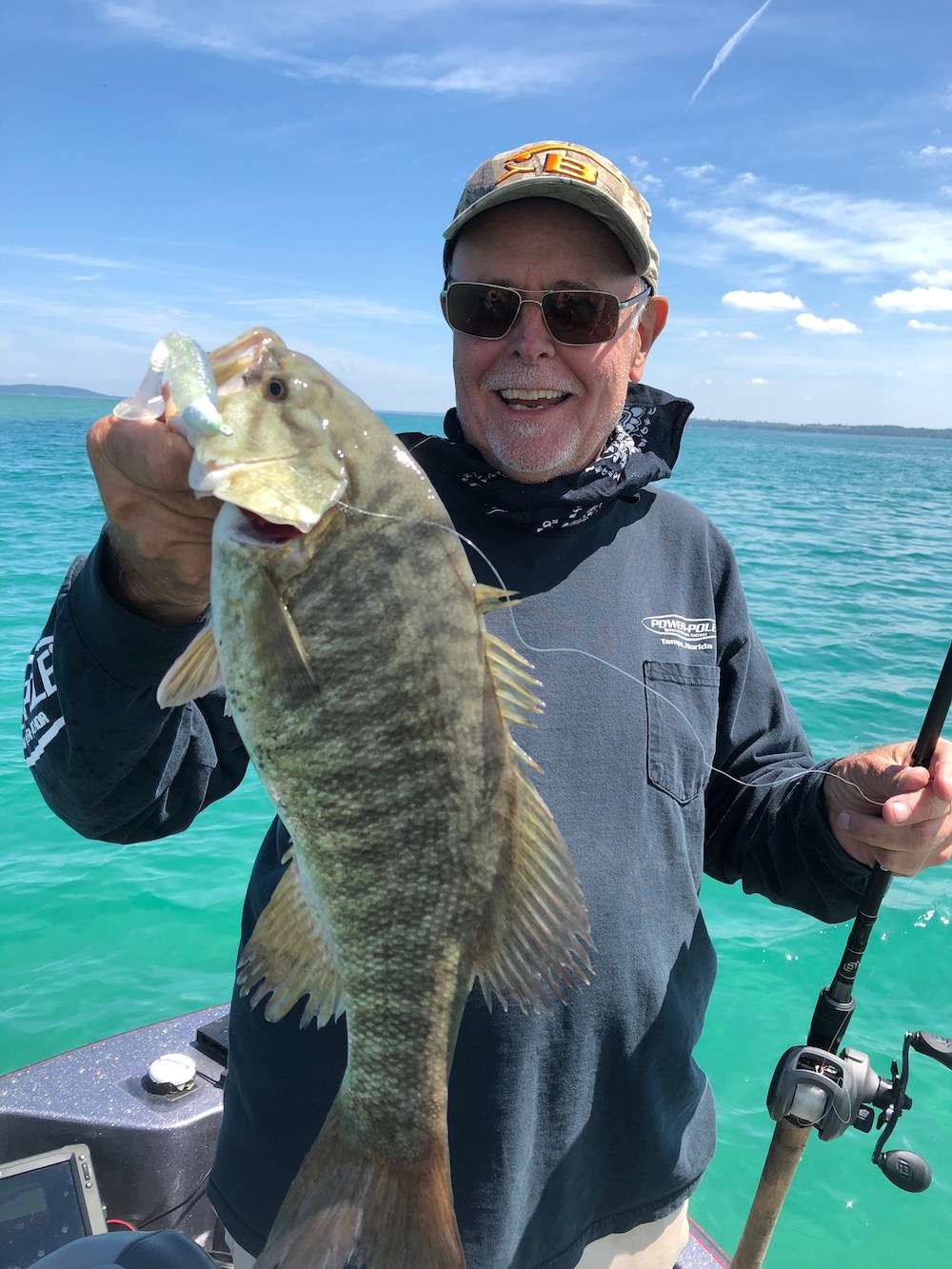
'Tis a noble and heroic thing, the wind! Who ever conquered it?
— Herman Melville, Moby Dick
Although writers have long waxed poetic when describing the raw power of the wind and the interconnectedness of wind and water, we bass fishermen usually grumble expletives when a stiff breeze blows. The wind may have seemed "noble and heroic" to Melville, but when our reels are backlashing and our trolling motors are sucking air, it's a royal pain in the butt to us bassers. BASS pros, on the other hand, know that wind can create some extraordinary fishing opportunities, and we have devised strategies for using it to our advantage. Use these tips from two tournament competitors to fill your livewell on your next windblown bass outing.
Let it blow!
"Weekend anglers always complain about the wind, but they'd tolerate it more if they knew how much it can produce a great bass bite," Bassmaster Elite Series competitor Dustin Wilks told BASS Times. The North Carolina pro, who has a college degree in fisheries biology, said the wind sets up a food chain scenario that's triggered by reduced solar penetration.
"Phytoplankton, microscopic plant-like organisms in the water, need sunlight for photosynthesis, and when the wind creates waves, solar penetration is reduced, causing these microscopic organisms to rise closer to the surface," he explained. "Zooplankton — microscopic invertebrate animals — in turn rise to feed on the phytoplankton. Soon baitfish move in to eat the plankton, which attracts top-line predators, including bass. This is a major reason for fishing a bank, point or other structure that's being hit by the wind."
Wind also hides imperfections in your lures and presentations. Wilks said: "When the lake's surface is choppy or rough, reduced light penetration means bass can't scrutinize your lure too carefully. Now instead of rejecting your bait because its paint job isn't perfect or its movements aren't 100 percent realistic, they're more likely to strike it simply because they saw it flash or detected some movement in the water."
One thing the wind doesn't do is blow baitfish around, Wilks emphasized. "This is one of the most prevalent misconceptions in bass fishing. The reason there are so many shad on a windblown bank isn't because the wind blew them there, it's because they're feeding on plankton. Healthy baitfish are perfectly capable of swimming wherever they want to, regardless of which way the wind is blowing."
Chris Noffsinger, a Bassmaster Open pro and Michigan fishing guide, echoes Wilks' feelings about wind. "I definitely prefer some wind, especially when fishing northern Michigan's superclear smallmouth lakes," he indicated. "If it's blowing hard enough to create anywhere from a 6-inch to a 2-foot chop, I have great confidence that I'll catch bass. The wind brings bass that were holding deep into shallower areas where they're much easier to catch. It also oxygenates the water, which energizes the fish. A 6-pound smallmouth will practically rip the rod out of your hands when it smacks your spinnerbait on a windblown point."
Both pros know it takes a seaworthy boat and a powerful trolling motor to handle strong winds. Wilks fishes from a 20-foot Skeeter bass boat; Noffsinger from a 21-foot Tracker Tundra walleye boat. Both pros' rigs are equipped with 36-volt Minn Kota trolling motors dishing out 101 pounds of thrust; Wilks' motor has a 50-inch shaft while Noffsinger's is a whopping 60 inches long.
"I need an extra-long shaft because I fish Lake Michigan frequently," Chris explained. "When the wind kicks up on that huge body of water, your trolling motor will suck air with a shorter shaft." Wilks' boat is equipped with a Power-Pole shallow water anchor, which he's found to be a godsend on windy days. "This device silently anchors my boat in seconds, permitting me to thoroughly fish out a windblown spot without constantly turning my trolling motor on and off, which can spook shallow bass."
Neither Wilks nor Noffsinger use a traditional lead anchor in deep water, but both occasionally employ drift socks to slow their boats in high winds. "A drift sock is like a parachute that you drag behind your boat," Wilks explained. "It grabs the water and slows your drift, allowing much easier boat control with your trolling motor. I use drift socks when fishing big, weedy flats on windblown Florida lakes; otherwise I'd have to keep my trolling motor on high 36 to control my drift, which would put every bass in the area on red alert."
Fair and ill winds
Most anglers know the old saying, "Wind from the west, fishing's best; wind from the east, fishing's least." But does this adage really hold true? "I'll often see a major jump in bass activity during a west or south wind," Noffsinger said, "but I hate waking up to an east wind on the morning of a tournament or guide trip because it usually gives the fish lockjaw.
A cold front often accompanies a north wind, requiring lure and presentation adjustments; still, I'll take a north wind over no wind at all." "I love a strong southwest wind in late fall or winter," Wilks said. "It brings warmer water to the surface and can trigger a monster crankbait bite. I think east winds are abnormal in most regions on the county and, as a result, can negatively impact the normal feeding patterns of bass."
How does a sudden change in wind velocity or direction impact the bass bite? "I've seen a slow, dead-calm day turn into a major slugfest once the wind started blowing, and I've seen a great bite stop like somebody turned off a switch when the wind died," Noffsinger said. "If the wind changes directions and the spot where you were catching 'em no longer produces, move to a new area that's being hit by the wind — the bite will often be stronger there."





